Fermenting Chicken Feed for Healthier Birds and Lower Costs
Boost nutrition, cut costs, and improve egg production with fermented chicken feed. Learn the benefits, methods, and tips for healthier chickens.
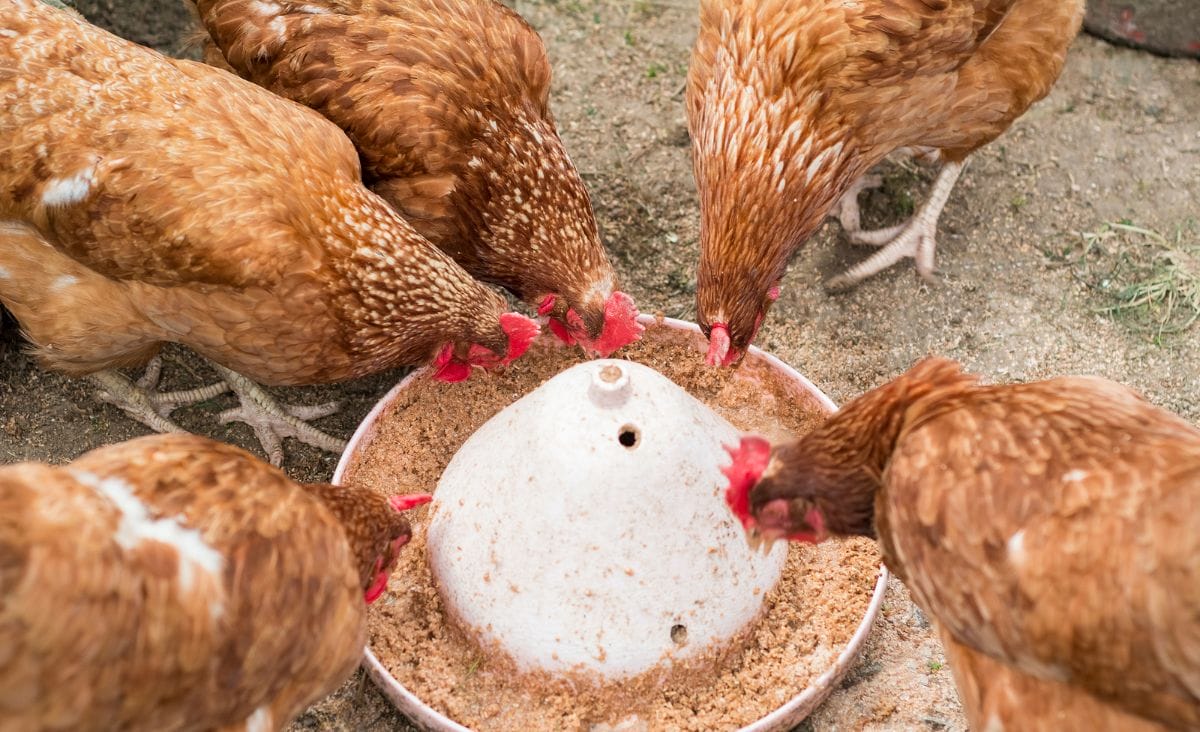
When I first started fermenting chicken feed, it was out of necessity—I had more beaks to feed than eggs to collect, and the numbers simply weren’t adding up. What began as a budget-saving experiment turned into a practice that transformed the health of my flock and my approach to chicken care.
Fermenting chicken feed isn’t just about cutting costs—it’s about improving your flock’s nutrition and minimizing waste. Whether you’re curious about how to get started or wondering if it’s worth the effort, this guide will walk you through the benefits of fermented chicken feed, how it works, and how to make it a seamless part of your routine.
The Benefits of Fermented Chicken Feed
Understanding the benefits of fermented chicken feed is just the first step. Now, let’s dive deeper into why fermenting chicken feed is such a game-changer for your flock’s health, your budget, and your overall feeding routine.
Why Ferment Chicken Feed?
Fermenting chicken feed has two standout benefits:
- Saves Money: Fermented feed minimizes waste. Dry feed often ends up scattered on the ground, uneaten. When fermented, feed becomes a soft, moist mixture that chickens eagerly consume, leaving little to no leftovers.
- Improves Nutrition: Fermentation increases the bioavailability of nutrients in chicken feed, enhancing your flock’s overall health. You’ll notice shinier feathers, better digestion, and even less feed consumed overall—around 30% less, on average.
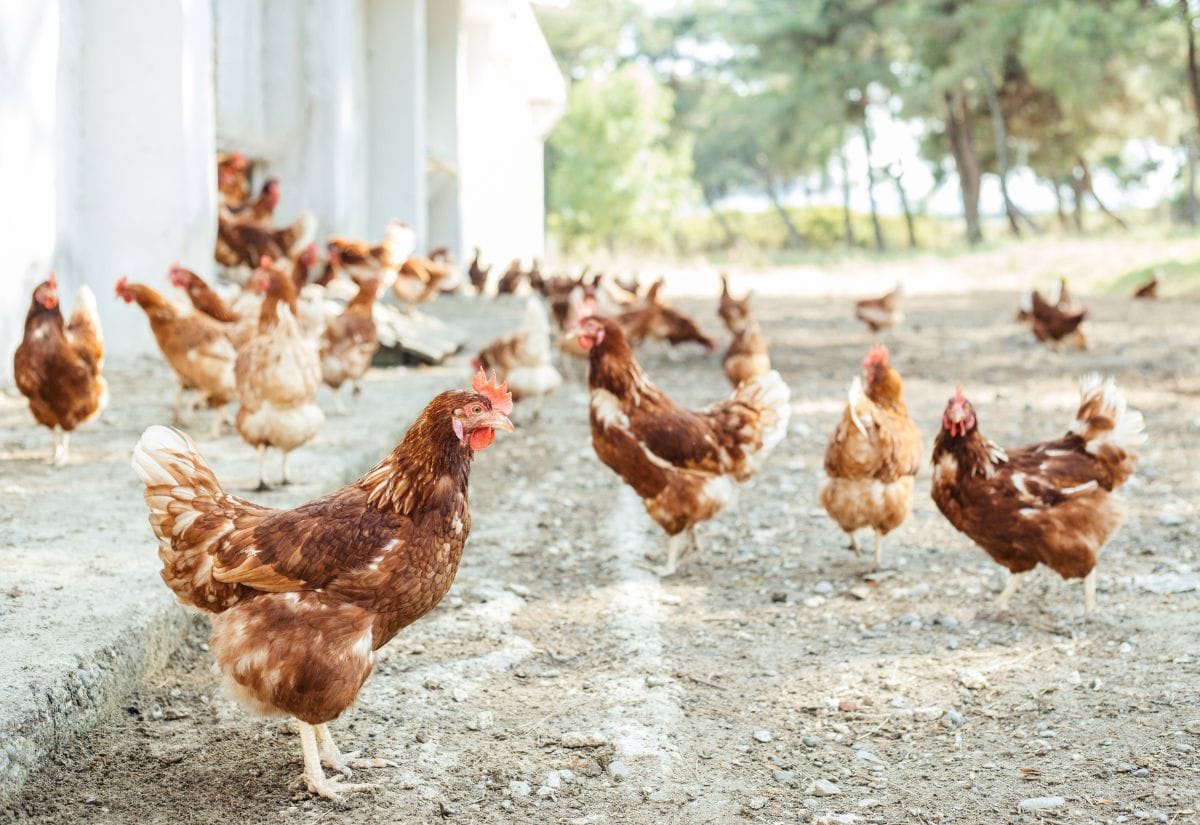
Less Waste, Healthier Flock
Chickens are notoriously picky eaters, often scratching and tossing feed onto the ground, leading to unnecessary waste. With fermented feed, this behavior decreases significantly because the moist texture makes it easier for them to consume and less likely to scatter.
Additionally, the fermentation process boosts beneficial probiotics, promoting good gut health that strengthens their immune systems, improves nutrient absorption, and can even enhance the quality and quantity of their egg production. Over time, you’ll notice healthier birds with shinier feathers and stronger shells, all while reducing feed costs.
A Step-by-Step Guide to Fermenting Chicken Feed
- Gather Supplies: You’ll need a bucket (or two, if using the strainer method), chicken feed, and water.
- Prepare the Bucket: Drill small holes in the bottom of one bucket to create a strainer. Place this bucket inside a second one to catch liquid.
- Add Feed and Water: Fill the inner bucket with feed, then cover it with water. Ensure the water level stays above the feed to prevent spoilage.
- Let It Ferment: Leave the feed to ferment for 3–5 days. Stir daily to ensure even fermentation. You’ll know it’s ready when you see bubbles and smell a pleasant, doughy aroma.
- Serve and Repeat: Lift the inner bucket to drain the excess liquid, then scoop out the feed for your flock. Save the starter water for your next batch.
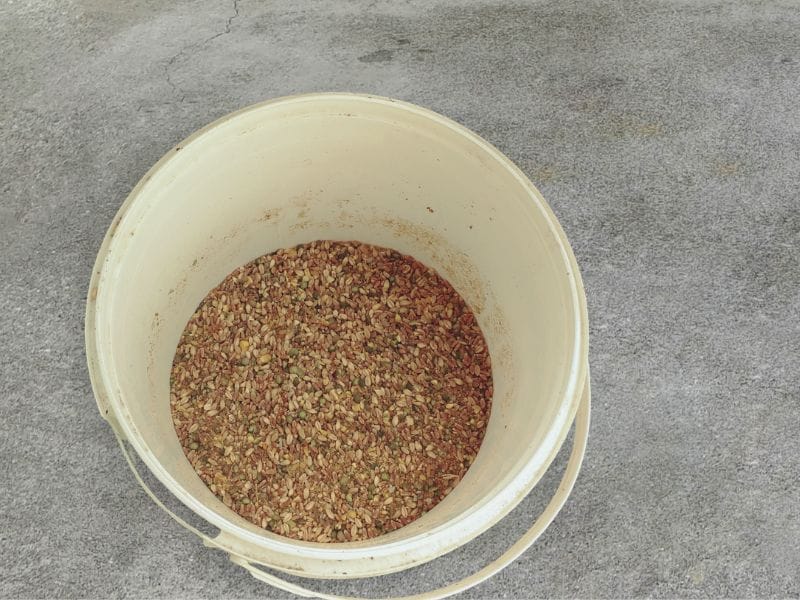
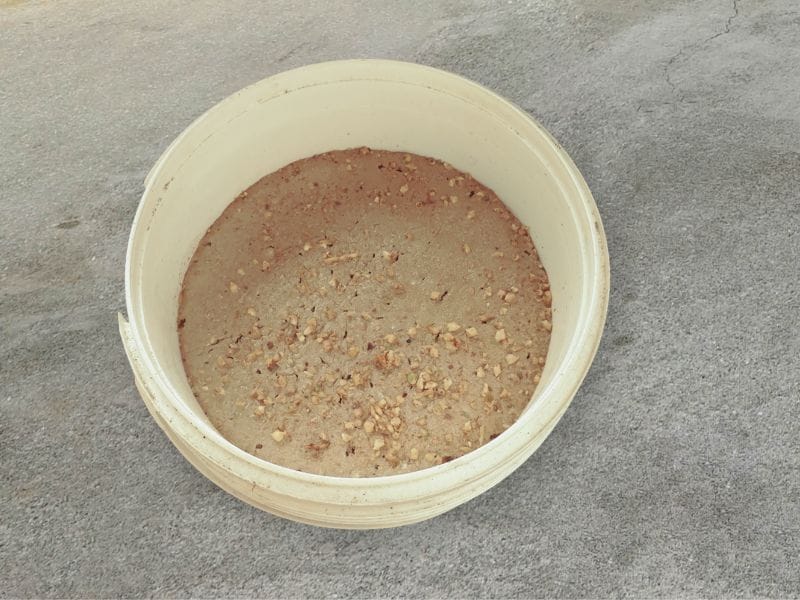
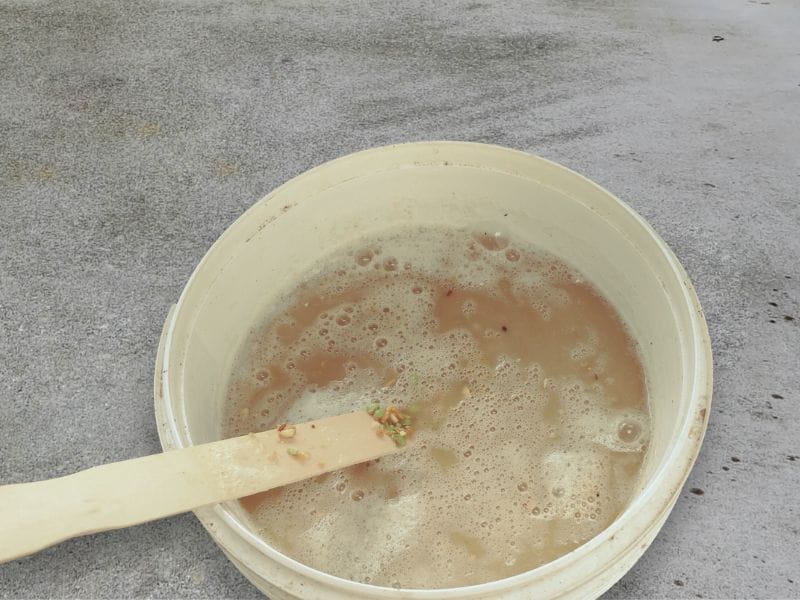
What Can You Ferment?
The base for fermented feed can be commercial pellets or crumbles, both of which provide a solid foundation for your flock’s dietary needs. From there, feel free to add grains, scratch, or scraps (no dairy or meat) to enhance the mix with variety and seasonal abundance. I aim for a 2:1 ratio of commercial feed to add-ins to ensure balanced nutrition, giving my birds the essential vitamins and minerals they require.
This ratio also makes it easier to experiment with different additions, such as cracked corn or field peas, while keeping the feed nutrient-dense and cost-effective. Adding diverse ingredients also helps to keep your chickens interested in their feed, reducing waste and encouraging them to consume the entire portion.
What You Need to Know About Fermenting
- Monitor the Smell: Properly fermented feed should smell sweet, like bread dough. If it smells rancid or sour, discard it and start over.
- Winter Adjustments: During colder months, fermenting can be tricky. I don’t ferment feed in winter because I don’t want buckets in my house, and the outdoor temperatures slow down the process.
- Ducklings Require Extra Care: If you have ducklings, add niacin to their diet. Sprinkle nutritional yeast over their feed before fermenting to ensure proper development.
Sometimes Fermenting is Messy
Fermenting isn’t always foolproof, and I’ve had my fair share of mishaps. Once, my buckets vacuum-sealed together, creating a frustrating scenario that left me elbow-deep in fermenting water, trying to scoop out feed one handful at a time. It was a messy and chaotic process, with water splashing everywhere and my patience running thin.
Moments like these can make it tempting to throw in the towel and switch back to the simplicity of dry feed.
However, when I see the healthier feathers, stronger eggshells, and lower feed costs, I’m reminded that these occasional hiccups are a small price to pay for the overall rewards of fermenting feed. It’s a learning curve, but one that pays off in the long run.
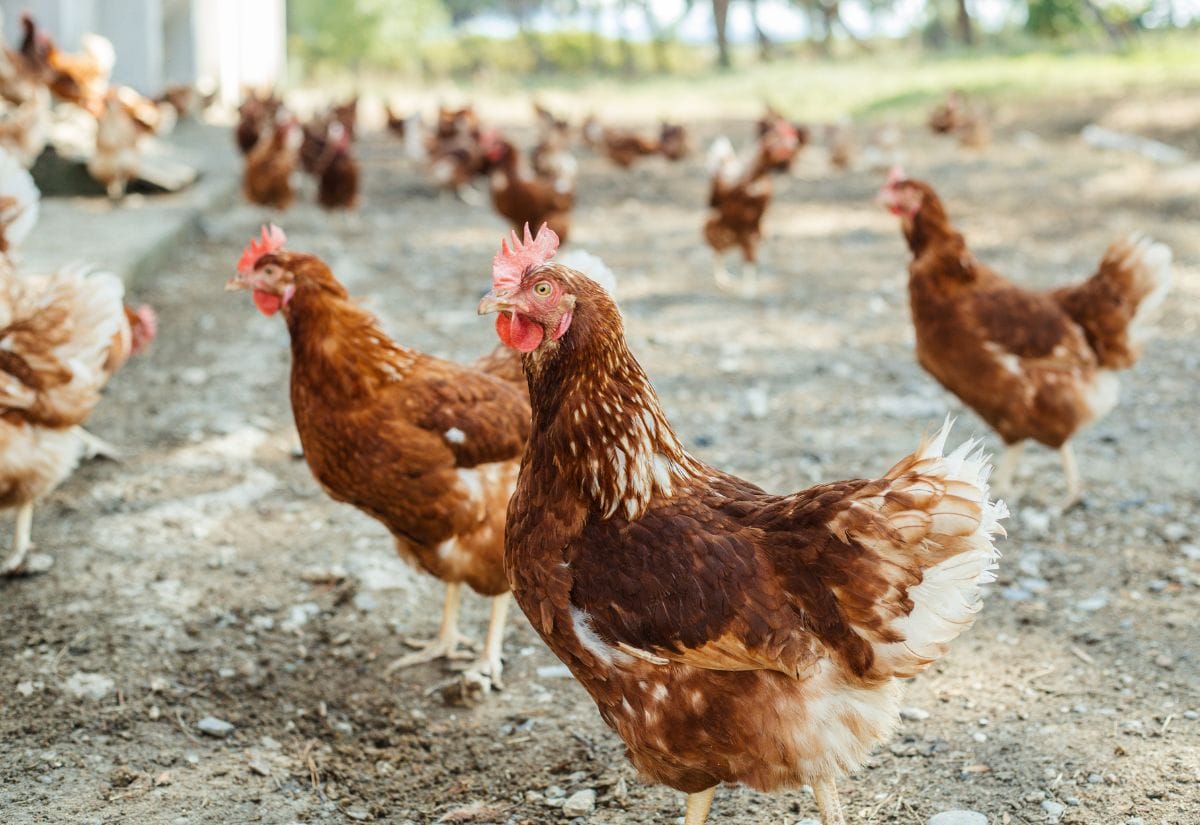
Tips for Easier Fermentation
- Use a Two-Bucket System: It makes draining simple and saves time, while keeping your fermentation process clean and efficient.
- Batch Ferment: If you have a large flock, ferment in bulk to minimize daily preparation and ensure a steady supply of feed.
- Experiment with Add-Ins: Seasonal grains or vegetables can add variety and nutrition to your flock’s diet, helping them thrive throughout the year.
Common Questions About Fermenting Chicken Feed
Pin now for healthier chickens and cost-effective feeding tips!
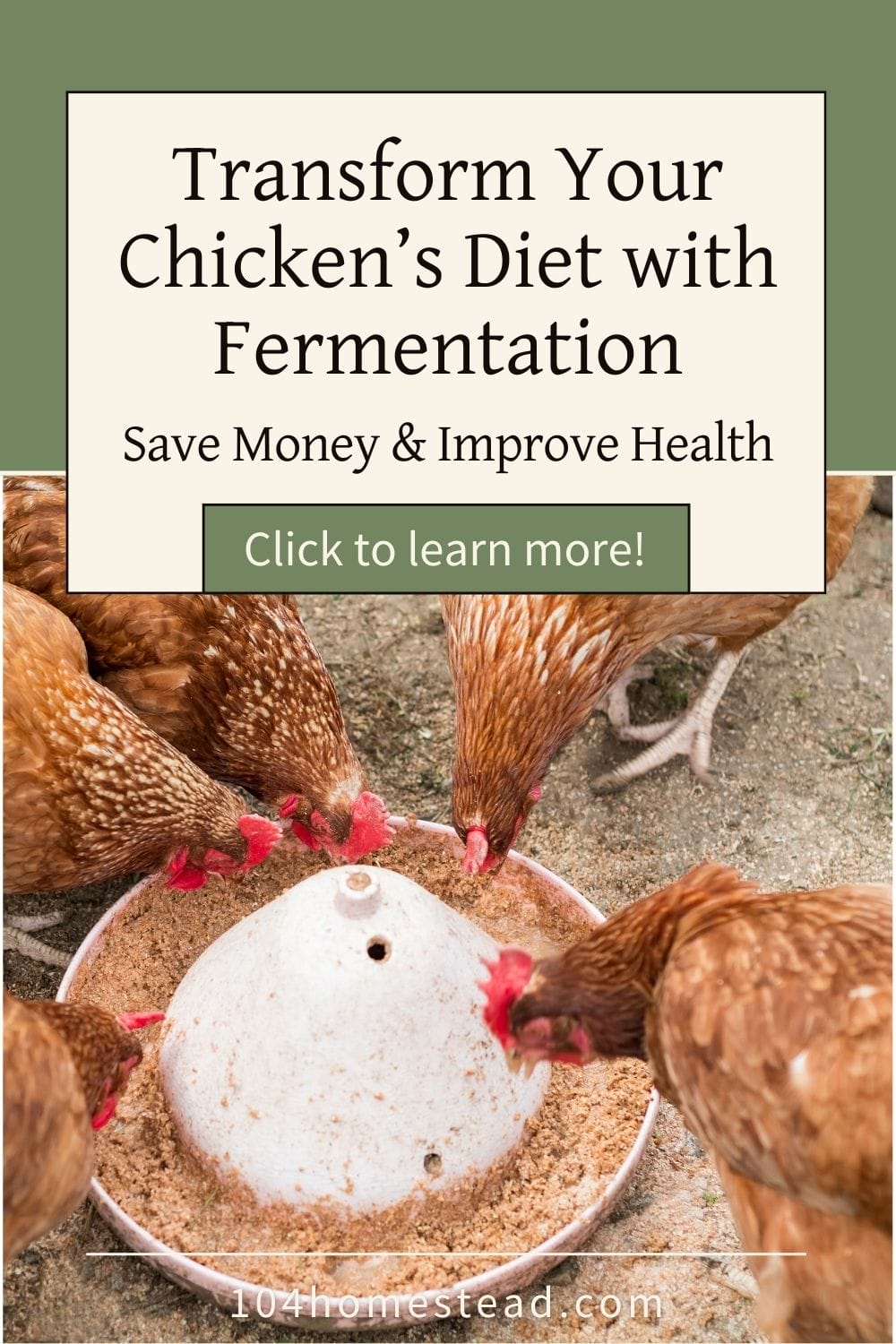
Fermenting chicken feed might seem like extra work, but the benefits for your flock’s health and your wallet make it worthwhile. Caring for a flock doesn’t have to break the bank. From creative feed savings to sprouting barley as fodder, there are plenty of ways to reduce costs while keeping your chickens healthy and happy. Curious about affordable nesting solutions or enrichment ideas to keep your birds entertained and stress-free? Explore these tips and strategies to level up your chicken-keeping game.
Have you tried fermenting feed for your birds? Share your experiences or tips in the comments below—I’d love to hear from you!




